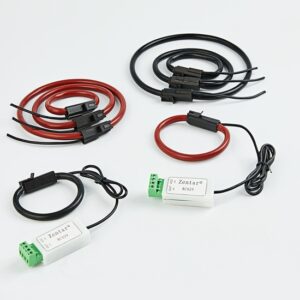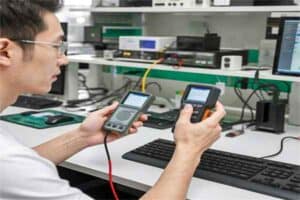Regarding voltage transformers, in fact, many people don’t know about it. Although voltage transformers have always been near your friends and serve your daily lives, then the following is about voltage transformers. Detailed description.
1. The working principle of voltage transformer is introduced in detail
The number of the voltage transformer is P.T, and the working principle of the voltage transformer is the same as that of a power transformer. The impedance of the voltage transformer itself is not large. Once the secondary side has a short-circuit fault, the current will be greatly increased and the coil will be burned. Therefore, there is a circuit breaker on the primary side of the voltage transformer, and the secondary side is reliably grounded to avoid the occurrence of high potential to the ground on the secondary side when the insulation layers on both sides are destroyed, which may cause personal safety and machine equipment accidents.
2. The classification of voltage transformers
(1) According to the installation address, it can be divided into indoor voltage transformer and outdoor voltage transformer. 35kv and below are mostly made into indoor voltage transformers; 35kv and above are made into outdoor voltage transformers.
(2) According to the number of phases, it can be divided into single-phase voltage transformer and three-phase voltage transformer. Three-phase voltage transformer cannot be made into 35kv and above.
(3) According to the number of windings, it can be divided into double winding voltage transformer and three winding voltage transformer. In addition to the primary side and the basic secondary side, the three winding voltage transformer also has a set of auxiliary secondary sides for grounding protection.
(4) According to the insulation method, it can be divided into dry-type voltage transformer, cast-type voltage transformer, oil-immersed voltage transformer and gas-filled voltage transformer. Dry-type voltage transformers are simple in structure and have no risk of fire or explosion, but the insulation layer has low compressive strength, which is only suitable for indoor equipment below 6kV; cast-type voltage transformers have compact structure and convenient maintenance, suitable for 3kV~ 35kV indoor power distribution equipment; oil-immersed voltage transformers have good insulation performance and can be used in outdoor power distribution equipment above 10kV; gas-filled voltage transformers are used in SF6 fully enclosed electrical appliances.
(5) According to the working principle, it can also be divided into electromagnetic voltage transformer, capacitive voltage transformer and electronic voltage transformer.
3. The main function of voltage transformer
The main function of the voltage transformer is to convert the high voltage into a 100V or lower standard secondary working voltage according to the proportion, for maintenance, measurement verification, and instrumentation. Although voltage transformers are also machinery and equipment that work according to the principle of electromagnetic induction, the electromagnetic induction structure correlation of voltage transformers and the comparison of current transformers are just the opposite. The secondary circuit of voltage transformer is a high impedance circuit. The magnitude of the secondary current is determined by the impedance of the circuit. When the secondary load impedance decreases, the amount of secondary current expands, prompting the amount of primary current to automatically expand by one portion to meet the electromagnetic induction balance between the primary and secondary sides. It can be said that the voltage transformer is a special transformer with restricted structure and application mode.
4 Matters needing attention when applying voltage transformer
The key issues that should be paid attention to when applying voltage transformer include:
(1) The secondary side of the voltage transformer must not have a short-circuit fault, and can only be put into operation after the compression test reaches the standard;
(2) Turn on the voltage transformer once and then twice, and stop using it in reverse;
(3) When you stop using the voltage transformer, take into account the maintenance and protection devices of the voltage transformer. To avoid the possibility of misoperation, the relevant maintenance and protection devices should be stopped. It should also be considered that the AC voltage transfer switch of the faulty filter is to the operating bus voltage transformer.
All in all, it is necessary to frequently check the voltage transformer’s oil shortage, oil leakage, oil-ceramic bushing for cracks, damage and other unsafe elements, in order to reasonably avoid common failures caused by such unsafe factors to ensure voltage mutual inductance The normal operation of the device.




